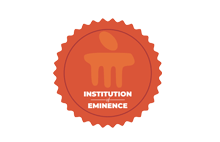TOPSIS-based factor analytic model for the assessment of agricultural development in the state of Uttar Pradesh, India
Document Type
Article
Publication Title
OPSEARCH
Abstract
This study delves into the nuanced evaluation of disparities in agricultural development in the leading agriculture-producing state, Uttar Pradesh in India. Unfortunately, owing to a multitude of reasons, the pace of development in all the districts of the state is different. Therefore, using the data on twenty-six agricultural indicators for the years 2019 and 2020, a unique and novel application that combines Factor Analytic Model, based on the theory of TOPSIS (Technique for Order of Preference by Similarity to Ideal Solution), has been used to develop a composite index system for ranking the agricultural development in various districts in the state. The districts are then categorized into homogeneous groups of Highly Developed, Developed, Developing, and Less Developed in terms of their agricultural development status using Hierarchical and K-Mean Cluster Analysis. Key findings reveal significant prosperity in the Western region of Uttar Pradesh, while the semi-arid Bundelkhand region faces considerable challenges, emerging as the most underdeveloped zone. In order to help the policy makers and planners to achieve a uniform pace of agricultural development in the entire state, the work in the article is also devoted to determine model districts for the identified less developed districts.
DOI
10.1007/s12597-024-00778-w
Publication Date
1-1-2024
Recommended Citation
Singh, Vishwajeet; Dube, Madhulika; Nagasampige, Manojkumar; and Trivedi, Ritanshi, "TOPSIS-based factor analytic model for the assessment of agricultural development in the state of Uttar Pradesh, India" (2024). Open Access archive. 10976.
https://impressions.manipal.edu/open-access-archive/10976


